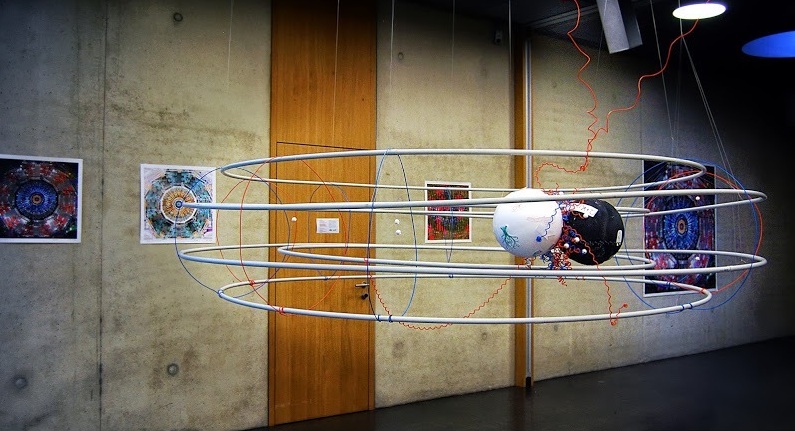Many scientists see intellectual as well as aesthetic beauty in their research. Now an education project from the CMS collaboration is harnessing artistic beauty to inspire students about the science of particle physics.
CMS physicist and artist Michael Hoch recently launched the Science&Art @ School project to engage students with stories from particle physics, which he hopes will help them to re-see the natural world in aesthetic as well as scientifically accurate ways. Hoch says that artistic methods can lead students to a deeper understanding of the beauty, value and transformative power of science. "I believe that essential aspects of our research here at CERN can be viewed as beautiful artistic creations," he says.
The first Science&Art @ School workshop took place in Graz, Austria, from 5-7 June, bringing together 62 students from two high schools nearby: Graz International Bilingual School (GIBS) and BORG.
On the first day, physicists from the Institute for High Energy Physics of the Austrian Academy of Sciences (HEPHY) delivered a CMS Masterclass. Students learned to visualize and analyze real LHC data from the CMS experiment. In the afternoon, students were introduced to the interconnections of science and the arts, and learned how artists visualize science and technology.
The second day was devoted to non-scientific creativity. Four groups of students, assisted by art educators and scientists, created artworks inspired by particle physics. The students documented the workshop with photos, videos and a blog, and displayed their artwork to the public for a day at the Joanneums Viertel Museum in Graz.
“Science&Art @ School rests on three pillars: interdisciplinarity, context and engagement with the aesthetic and intellectual beauty of particle physics,” says Hoch. “Colliding art and science produces something new and beautiful.”
The first Science&Art @ School workshop was supported by the CMS Collaboration, CERN, HEPHY, the City of Graz, the Universalmuseum Joanneum, and the PATHWAY Project.

